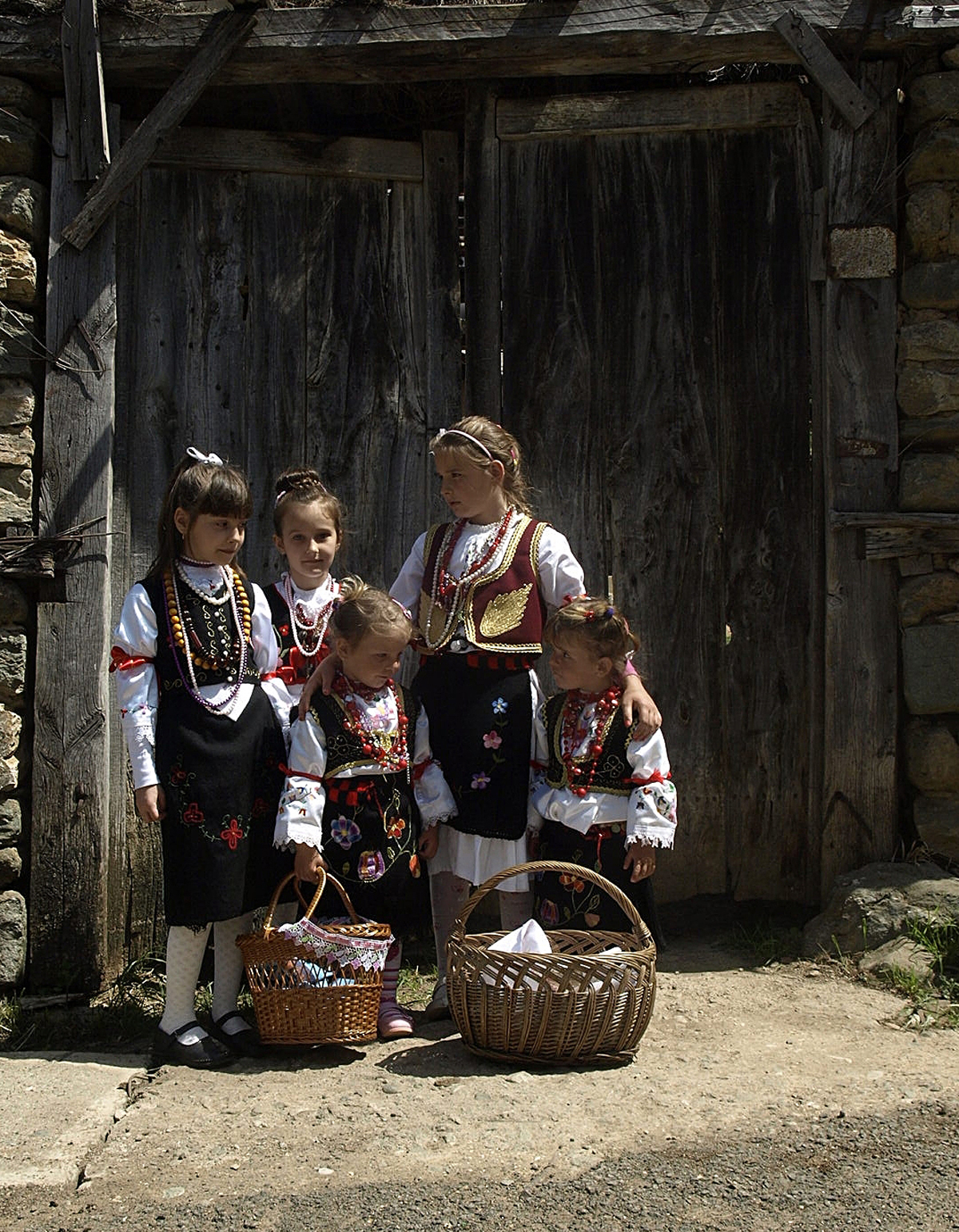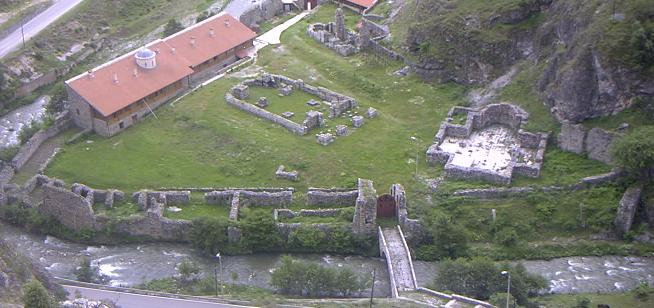|
Church Of St. Nicholas, Štrpce
The Church of St. Nicholas (; is a Serbian Orthodox church built in the mid-16th century, located in Štrpce, Kosovo. It lies by the village graveyard. See also *Cultural monuments of the Kosovo district Culture ( ) is a concept that encompasses the social behavior, institutions, and norms found in human societies, as well as the knowledge, beliefs, arts, laws, customs, capabilities, attitudes, and habits of the individuals in these groups ... References Sources *SANU, National Center for DigitizationCultural Monuments in Serbia: Crkva Sv. Nikole* {{DEFAULTSORT:Church of St. Nicholas, Strpce Štrpce 16th-century Serbian Orthodox church buildings Serbian Orthodox church buildings in Kosovo Cultural heritage of Kosovo ... [...More Info...] [...Related Items...] OR: [Wikipedia] [Google] [Baidu] |
Štrpce
Štrpce (Serbian Cyrillic alphabet, Serbian Cyrillic: Штрпце) or Shtërpcë ( sq-definite, Shtërpca) is a List of cities in Kosovo, town and Municipalities of Kosovo, municipality located in the District of Ferizaj, Ferizaj District in Kosovo. As of 2015, it has an estimated population of 13,630 inhabitants. History Middle Ages In Medieval Serbia, the ''župa'' (county, district) of Sirinić (Sirinićka župa), first mentioned in a 13th-century charter, covered the whole of modern Štrpce municipality, having the towns of Gradište (site in Brezovica) and Zidinac (site in Gotovuša). Several remains of Byzantine forts exist in the region. At the top of the Čajlije hill, above the mouth of the Piljevac creek of the Lepenac river, there exists the remains of the Gradište fort, which has two layers, the first from the 6th century, and the second from the 13th century. The fort is in ruins, of which a donjon tower, and outlines of other buildings, can be identified. The entranc ... [...More Info...] [...Related Items...] OR: [Wikipedia] [Google] [Baidu] |
Kosovo
Kosovo, officially the Republic of Kosovo, is a landlocked country in Southeast Europe with International recognition of Kosovo, partial diplomatic recognition. It is bordered by Albania to the southwest, Montenegro to the west, Serbia to the north and east, and North Macedonia to the southeast. It covers an area of and has a population of approximately 1.6 million. Kosovo has a varied terrain, with high plains along with rolling hills and List of mountains in Kosovo, mountains, some of which have an altitude over . Its climate is mainly Continental climate, continental with some Mediterranean climate, Mediterranean and Alpine climate, alpine influences. Kosovo's capital and List of cities and towns in Kosovo#List, most populous city is Pristina; other major cities and urban areas include Prizren, Ferizaj, Gjilan and Peja. Kosovo formed the core territory of the Dardani, an ancient Paleo-Balkanic languages, Paleo-Balkanic people attested in classical sources from the 4th cent ... [...More Info...] [...Related Items...] OR: [Wikipedia] [Google] [Baidu] |
Serbian Orthodox Church
The Serbian Orthodox Church ( sr-Cyrl-Latn, Српска православна црква, Srpska pravoslavna crkva) is one of the autocephalous (ecclesiastically independent) Eastern Orthodoxy, Eastern Orthodox Eastern Orthodox Church#Constituencies, Christian churches. The majority of the population in Serbia, Montenegro and Republika Srpska of Bosnia and Herzegovina are Baptism, baptised members of the Serbian Orthodox Church. It is organized into metropolis (religious jurisdiction), metropolitanates and eparchies, located primarily in Serbia, Bosnia and Herzegovina, Montenegro, and Croatia. Other congregations are located in the Serb diaspora. The Serbian Patriarch serves as first among equals in his church. The current patriarch is Porfirije, Serbian Patriarch, Porfirije, enthroned on 19 February 2021. The Church achieved Autocephaly, autocephalous status in 1219, under the leadership of Saint Sava, becoming the independent Archbishopric of Žiča. Its status was elevated ... [...More Info...] [...Related Items...] OR: [Wikipedia] [Google] [Baidu] |
Demetrius Of Thessaloniki
Saint Demetrius (or Demetrios) of Thessaloniki, Thessalonica (, ), also known as the Holy Great martyr, Great-Martyr Demetrius the Myroblyte (meaning 'the Myrrh-Gusher' or 'Myrrh-Streamer'; 3rd century – 306), was a Greeks, Greek Christianity, Christian martyr of the early 4th century AD. During the Middle Ages, he came to be revered as one of the most important Orthodox military saints, often paired with Saint George, Saint George of Lydda. In the Roman Catholic Church he is most commonly called Demetrius of Sirmium and his memorial is 9 April in the 2004 Roman Martyrology and 8 October in the martyrology of the Extraordinary Form. It is debated whether Demetrius of Thessalonica and Demetrius of Sirmium are the same person. Life The earliest written accounts of his life were compiled in the 9th century, although there are earlier images of him, and the 7th-century ''Miracles of Saint Demetrius'' collection. According to these early accounts, Demetrius was born to pious Chri ... [...More Info...] [...Related Items...] OR: [Wikipedia] [Google] [Baidu] |
Church (building)
A church, church building, church house, or chapel is a building used for Christian worship church service, services and Christian religion, Christian activities. The earliest identified Christian church is a house church founded between 233 AD and 256 AD. ''Church'' is also used to describe a Church (congregation), body or an assembly of Christian believers, while "the Church" may be used to refer to the worldwide Christian religious community as a whole. In traditional Christian architecture, the plan view of a church often forms a Christian cross with the centre aisle and seating representing the vertical beam and the Church architecture#Characteristics of the early Christian church building, bema and altar forming the horizontal. Towers or domes may inspire contemplation of the heavens. Modern churches have a variety of architectural styles and layouts. Some buildings designed for other purposes have been converted to churches, while many original church buildings have bee ... [...More Info...] [...Related Items...] OR: [Wikipedia] [Google] [Baidu] |
Monuments Of Culture Of Exceptional Importance (Serbia)
A monument is a type of structure that was explicitly created to commemorate a person or event, or which has become relevant to a social group as a part of their remembrance of historic times or cultural heritage, due to its artistic, historical, political, technical or architectural importance. Examples of monuments include statues, (war) memorials, historical buildings, archaeological sites, and cultural assets. If there is a public interest in its preservation, a monument can for example be listed as a UNESCO World Heritage Site. The '' Palgrave Encyclopedia of Cultural Heritage and Conflict'' gives the next definition of monument:Monuments result from social practices of construction or conservation of material artifacts through which the ideology of their promoters is manifested. The concept of the modern monument emerged with the development of capital and the nation-state in the fifteenth century when the ruling classes began to build and conserve what were termed monument ... [...More Info...] [...Related Items...] OR: [Wikipedia] [Google] [Baidu] |
Eparchy Of Raška And Prizren
Eparchy of Raška and Prizren is one of the oldest eparchy, eparchies of the Serbian Orthodox Church, featuring the seat of the Serbian Orthodox Church, the Patriarchate of Peć (monastery), Serbian Patriarchal Monastery of Peć, as well as Serbian Orthodox Monastery of Visoki Dečani, which together are part of the UNESCO World Heritage sites of Serbia. Jurisdiction of the Eparchy is reflected in its name: it has diocesan jurisdiction over Eastern Orthodox Christians in historical regions of Raška (region), Raška (Serbia) and Kosovo and Metohija. The official see of the Eparchy is in Prizren, Kosovo. History Under the jurisdiction of Archbishopric of Justiniana Prima Within the territory of the present-day Eparchy of Raška and Prizren several older eparchies existed throughout history. One of them was the ancient Bishopric of Ulpiana also known as ''Iustiniana Secunda'' situated near the modern town of Lipjan, where the remains of episcopal Basilica dating from the first hal ... [...More Info...] [...Related Items...] OR: [Wikipedia] [Google] [Baidu] |
Serbian Orthodox Church
The Serbian Orthodox Church ( sr-Cyrl-Latn, Српска православна црква, Srpska pravoslavna crkva) is one of the autocephalous (ecclesiastically independent) Eastern Orthodoxy, Eastern Orthodox Eastern Orthodox Church#Constituencies, Christian churches. The majority of the population in Serbia, Montenegro and Republika Srpska of Bosnia and Herzegovina are Baptism, baptised members of the Serbian Orthodox Church. It is organized into metropolis (religious jurisdiction), metropolitanates and eparchies, located primarily in Serbia, Bosnia and Herzegovina, Montenegro, and Croatia. Other congregations are located in the Serb diaspora. The Serbian Patriarch serves as first among equals in his church. The current patriarch is Porfirije, Serbian Patriarch, Porfirije, enthroned on 19 February 2021. The Church achieved Autocephaly, autocephalous status in 1219, under the leadership of Saint Sava, becoming the independent Archbishopric of Žiča. Its status was elevated ... [...More Info...] [...Related Items...] OR: [Wikipedia] [Google] [Baidu] |
Cultural Monuments Of The Kosovo District
Culture ( ) is a concept that encompasses the social behavior, institutions, and norms found in human societies, as well as the knowledge, beliefs, arts, laws, customs, capabilities, attitudes, and habits of the individuals in these groups.Tylor, Edward. (1871). ''Primitive Culture''. Vol 1. New York: J. P. Putnam's Son Culture often originates from or is attributed to a specific region or location. Humans acquire culture through the learning processes of enculturation and socialization, which is shown by the diversity of cultures across societies. A cultural norm codifies acceptable conduct in society; it serves as a guideline for behavior, dress, language, and demeanor in a situation, which serves as a template for expectations in a social group. Accepting only a monoculture in a social group can bear risks, just as a single species can wither in the face of environmental change, for lack of functional responses to the change. Thus in military culture, valor is counted ... [...More Info...] [...Related Items...] OR: [Wikipedia] [Google] [Baidu] |
16th-century Serbian Orthodox Church Buildings
The 16th century began with the Julian year 1501 (represented by the Roman numerals MDI) and ended with either the Julian or the Gregorian year 1600 (MDC), depending on the reckoning used (the Gregorian calendar introduced a lapse of 10 days in October 1582). The Renaissance in Italy and Europe saw the emergence of important artists, authors and scientists, and led to the foundation of important subjects which include accounting and political science. Copernicus proposed the heliocentric universe, which was met with strong resistance, and Tycho Brahe refuted the theory of celestial spheres through observational measurement of the 1572 appearance of a Milky Way supernova. These events directly challenged the long-held notion of an immutable universe supported by Ptolemy and Aristotle, and led to major revolutions in astronomy and science. Galileo Galilei became a champion of the new sciences, invented the first thermometer and made substantial contributions in the fields of ph ... [...More Info...] [...Related Items...] OR: [Wikipedia] [Google] [Baidu] |
Serbian Orthodox Church Buildings In Kosovo
Serbian may refer to: * Pertaining to Serbia in Southeast Europe; in particular **Serbs, a South Slavic ethnic group native to the Balkans ** Serbian language ** Serbian culture **Demographics of Serbia, includes other ethnic groups within the country *Pertaining to other places **Serbia (other) **Sorbia (other) *Gabe Serbian (1977–2022), American musician See also * * * Sorbs * Old Serbian (other) Old Serbian may refer to: * someone or something related to the Old Serbia, a historical region * Old Serbian language, a general term for the pre-modern variants of Serbian language, including: ** the Serbian recension of Old Church Slavonic la ... {{Disambiguation Language and nationality disambiguation pages ... [...More Info...] [...Related Items...] OR: [Wikipedia] [Google] [Baidu] |








